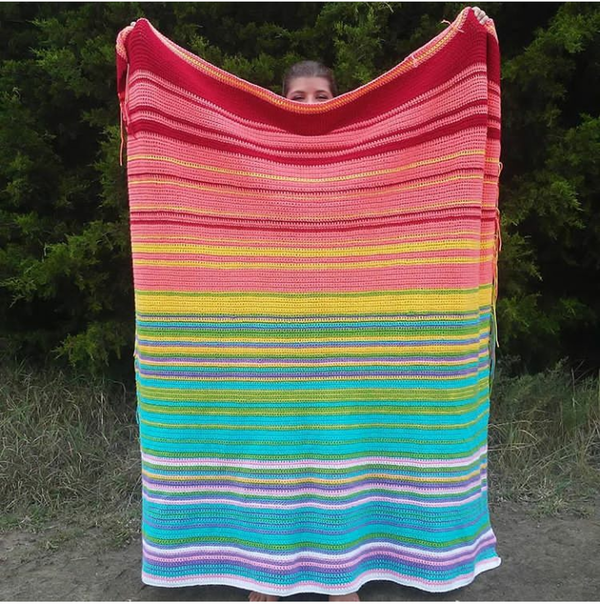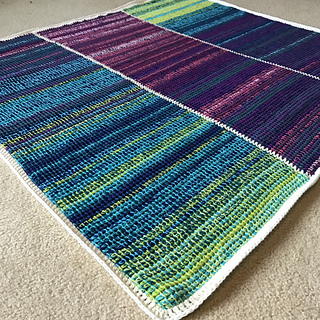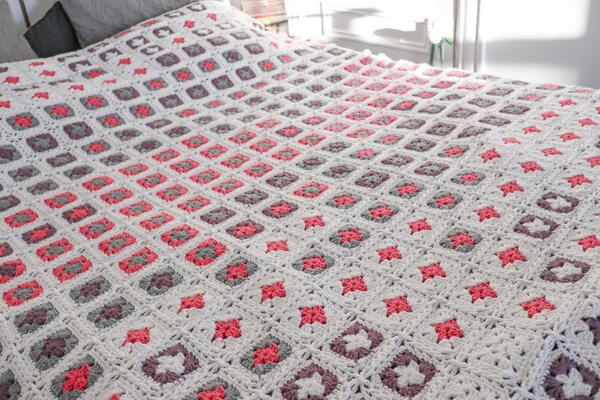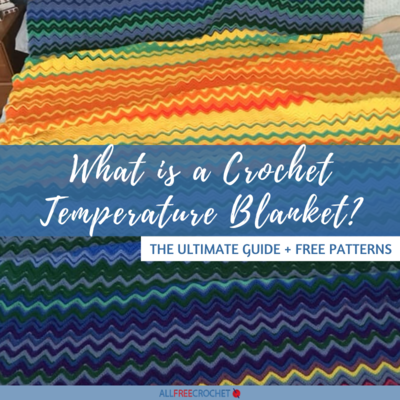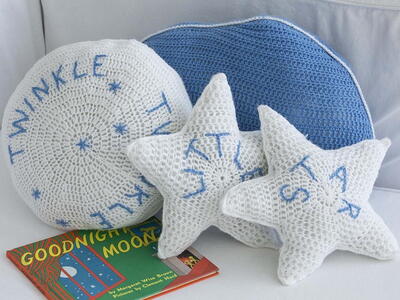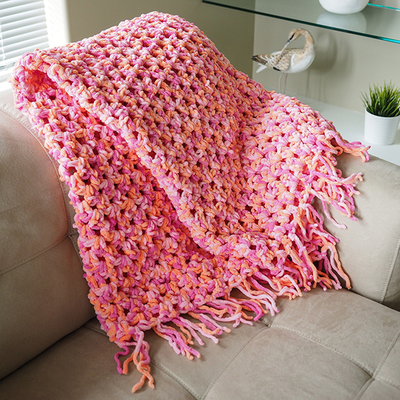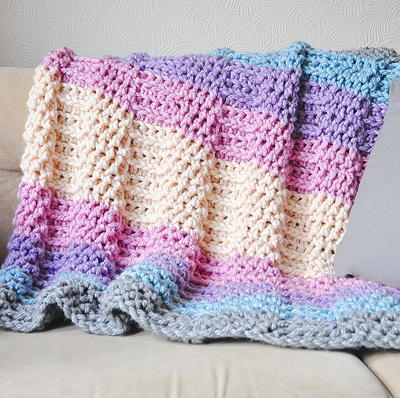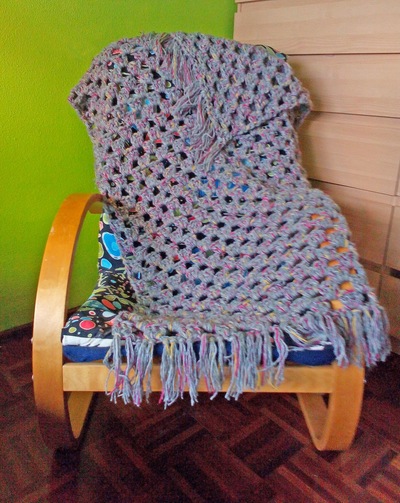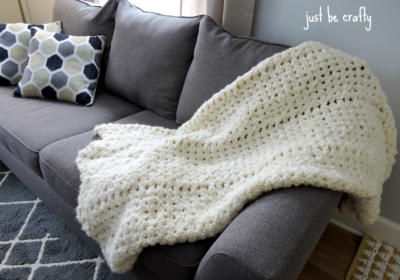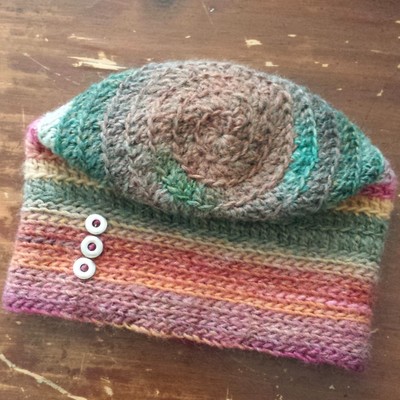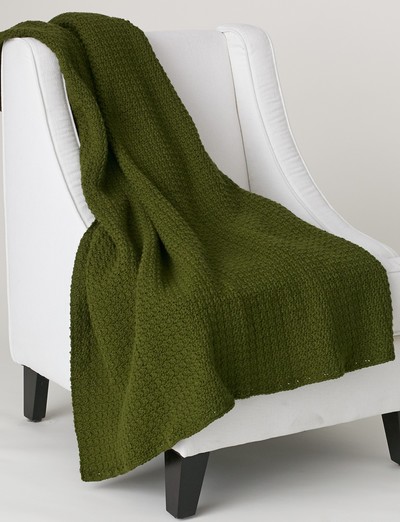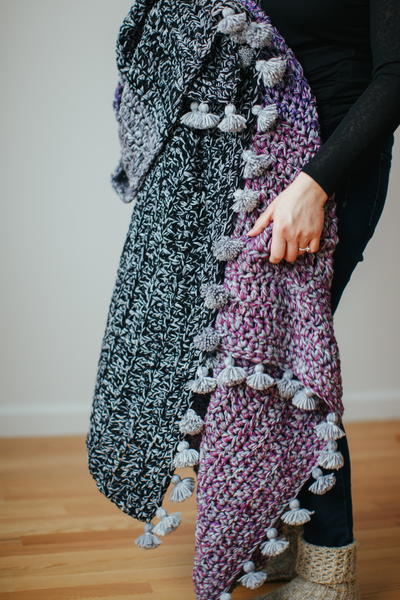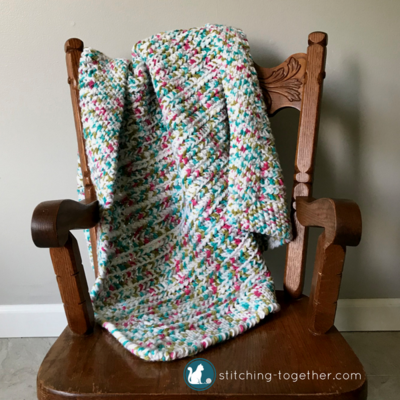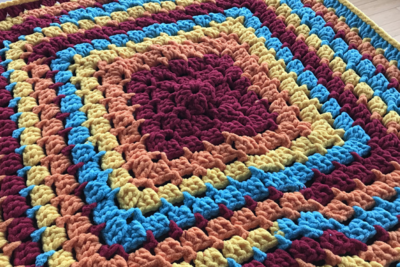What is a Crochet Temperature Blanket? + How to Make One
Learn how to make a temperature blanket with this guide!
Scroll down for free temperature blanket patterns and color charts!
Whether you're scrolling Pinterest, Instagram, or Facebook, you've probably seen a temperature blanket pop up in your feed. Learn more with our guide, What is a Crochet Temperature Blanket?
We are also going to explain How to Make a Temperature Blanket. Once you've finished with this guide, you will be all set and ready to work up a beautiful (and sentimental) crochet throw for yourself or someone you love.
These stunning, striped, multi-colored crochet blanket patterns are hard to miss. They're so bright and stunning! These eye-catching blankets are created by hooking rows and rows of different colors to mark the temperature of days or weeks of the year.
There are about a million ways to make a crochet temperature blanket. From choosing different stitch and color scheme variations to how often you change colors (daily, weekly, monthly), the options for designing a temperature blanket are endless.
Tip: If you don't want the time commitment of a blanket, consider making a temperature scarf, amigurumi, or smaller project. There are so many unique ideas out there! And if you're interested in knitting a temperature scarf, check out How to Knit a Temperature Scarf from our friends at AllFreeKnitting.
Keep scrolling for an in-depth look at how to make a crochet temperature blanket (though it's the same concept for knitting or sewing one, too!). We've got tons of tips on the best stitches to use, how to plan out your project, expert ideas on how to keep your colors organized, and (of course) free crochet patterns!
Sign Up For More Free Patterns
What is a Temperature Blanket?
A crochet temperature blanket is a crochet blanket that is created by following a color template for the change in temperature over the course of a specific time period, usually a year. These stunning blankets are gorgeous to look at, but as it turns out they can be a bit of a pain to complete.
Below is an example of a crochet temperature blanket. It's the Must-Make Crochet Temperature Afghan found on our sister site, AllFreeCrochetAfghanPatterns. Learn more by scrolling to the next section!
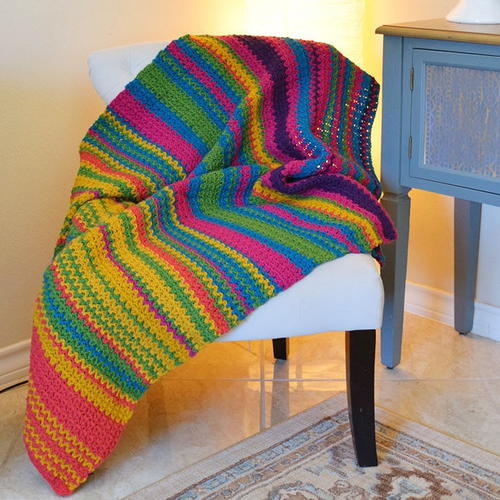
How to Crochet a Temperature Blanket
When talking to our active Facebook group and audience, a lot of crocheters expressed regret on not planning their pattern ahead of time or using the wrong stitch. If you crochet a row for every single day of the year with a thicker stitch and a medium weight yarn, you end up with a very long blanket. That is why AllFreeCrochet decided to do a little research and put together a guide to crocheting a temperature blanket you won't regret (hopefully).
- Make a Plan
The most important thing to know about making a crochet temperature blanket is that you must start with a plan. You will want to pick a color scheme, a stitch, and how often you will be stitching the pattern. Sit down and think about how you want to create this pattern. We consider deciding on the following:
- How Many Colors Do You Want to Use?
The more colors, the more stunning the pattern. It also includes more yarn and more switching colors while crocheting. Depending on how much the temperature fluctuates in your region, decide on whether or not you want to pick colors in 25, 15, or even 5-degree increments. - Know Your Region or Climate!
Deanna Butler from our AllFreeCrochet community says: I lived by the Californian coast when I was making money and the temp rarely went over 90 or below 60. So plan your temperature guide accordingly. I bookmarked a weather website that gave me the high temp of previous days if I missed a day or two. - How Often Do You Want to Crochet?
This is imperative! If you do decide to crochet a row every single day, this means you will want to use a smaller stitch and a thinner yarn. If you'd rather crochet less, consider doing a few rows per week or even doing a granny square for the average temperature each month.
- Write Down Your Pattern and Plan!
This will help you stayed organized. If you make a plan for rows and colors, you'll be sure to create a manageable project and one you will enjoy creating. Need some help? Use this Afghan Size Calculator from TheCrochetCrowd.com to create your pattern. Be sure to pick a stitch that you enjoy working on and can work over and over again. more complicated stitches look lovely, but this is a big undertaking. Beginner stitches might be your best bet.
Keep scrolling for some stitching suggestions!
- Buy Your Yarn!
Once you have decided on your colors, we highly recommend buying your yarn right off the bat. This will help ensure that you will not run out of a particular color. If you live somewhere that has wildly different seasons, buying your winter/spring and fall/summer colors in two batches will likely let you spread out the expenses.
- How Many Colors Do You Want to Use?
- Stick to Your Plan!
Do this by setting aside some time every week to work on your project. If you are crocheting a row every day, we recommend setting aside some time every 5-7 days to crochet your rows. This will help you procrastinate less and having to sit down to crochet rows over and over again.
Crochet Temperature Blanket Chart
Using a color chart when crocheting a temperature blanket is a fantastic way to get organized. We have three different versions for you to download here at AllFreeCrochet. The temperatures are in both Fahrenheit and Celcius, too!
Whether you want to use 25, 15, or 5 colors, we have the temperature blanket color charts you're looking for.
Below, you'll see the three versions we have available as PDFs to download. That way, you can easily refer to the chart when you're planning your next temperature blanket.
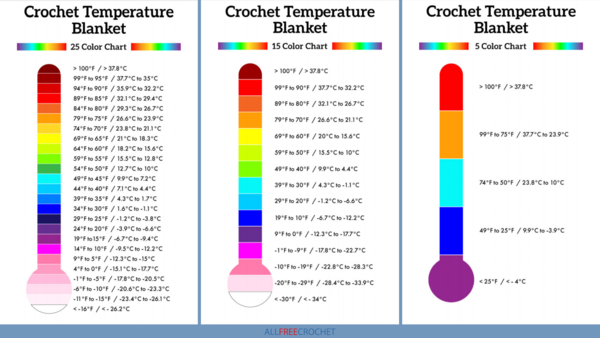
On the left of the image above, you'll see an example of the 25 color version temperature blanket chart. This version is the most helpful if you have a wide variety of temperatures you want to feature in your blanket. This ranges from -16 degrees (F) to over 100 degrees (F).
Click Here to Download the 25 Color Chart
In the middle of the image above, you'll see an example of the 15 color version of our temperature blanket chart. Still very colorful but less of a dramatic change between temperature ranges. You'll still get variety but instead of changing color every 5 degrees, it's every 10 degrees.
Click Here to Download the 15 Color Chart
Finally, on the right of the image above, you'll see an example of the 5 color version of our temperature blanket chart. With only 5 color changes, this will have very few color changes, which is easier to work with yet still results in a gorgeous blanket. This version changes color every 24 degrees.
Click Here to Download the 5 Color Chart
Think you'll try all three versions? Get them all together in one handy PDF!
Click Here to Download All 3 Temperature Blanket Charts.
Where to Find a List of Daily temperatures
The simplest way is to plan in advance which future period of time you are going to use for your blanket and then pull the high/low from each day (via your local weather/news station or favorite weather app) as you work or write it down to crochet later.
However, many people want to crochet a temp blanket for a past period. So, where can you find that data? Thank goodness for the internet because there are a few handy sites that provide information on past temperatures.
- The National Oceanic and Atmospheric Administration has Daily Temperature and Precipitation Reports that you can review. Also check their Past Weather by Zip Code page.
- Similarly, National Weather Service has a climate map where you can choose the area of choice. Take a look at their Local Climate Data and Plots page, too.
- The Weather Company (Wunderground) has a Historical Weather page where you can plug in your area.
- Melissa Lookups has Climate Data by ZIP Code from 1971-2000.

If none of these are helpful to you, search specifically for what you are looking for on your search engine of choice and see if there is another site that can help.
Temperature Blanket Crochet Stitch Suggestions
Picking the right stitch for your temperature blanket is important. Stitches add depth, texture, and design to a crochet afghan pattern. With so many colors going into one afghan, there are a lot of stitches to choose from. We recommend you pick a stitch that your familiar with and don't mind repeating over and over and over again.
Crochet Slip Stitch - If you're hoping to accomplish a clean, solid line for your temperature blanket, the slip stitch is an excellent choice. This beginner stitch makes it easy to complete your rows in a timely manner. Check out an example of a slip stitch temperature blanket from a reader below.
Barbara Carter from our AllFreeCrochet community says: I did one last year, using a slip stitch. I did the high & low temperatures. I put a row of black between months then around the border adding the month & the temperature gauge at the top. My grandson loves it so I gave it to him.
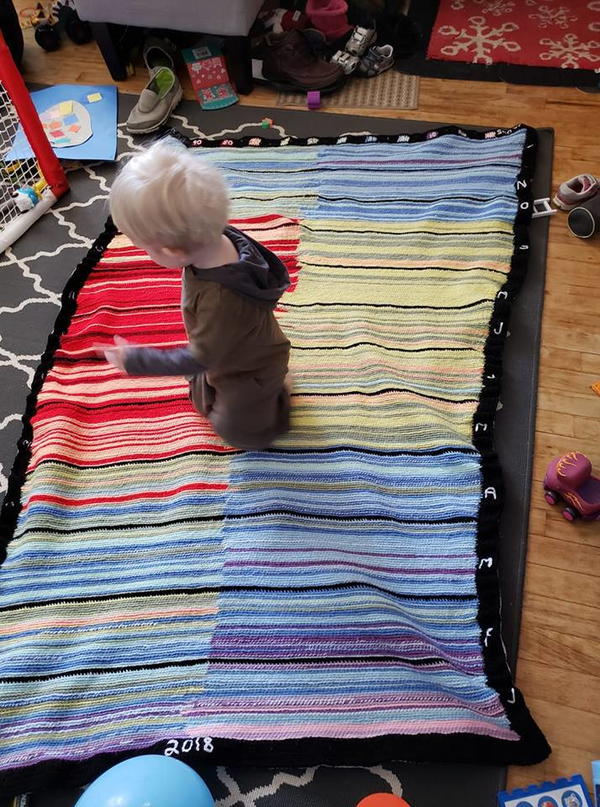
Single Crochet Ripple Stitch - Looking to add some texture to your pattern? Try using this thinner ripple stitch pattern. It achieves a lovely, wavy pattern that can really compliment your colors.
Terry Lehn from our AllFreeCrochet community says: Single crochet ripple stitch with an f hook and red heart super saver. The only problem I have with it is that it’s not wide enough for the length. I’m thinking of putting a single crochet border up the sides using some of the leftover colors but not yet.
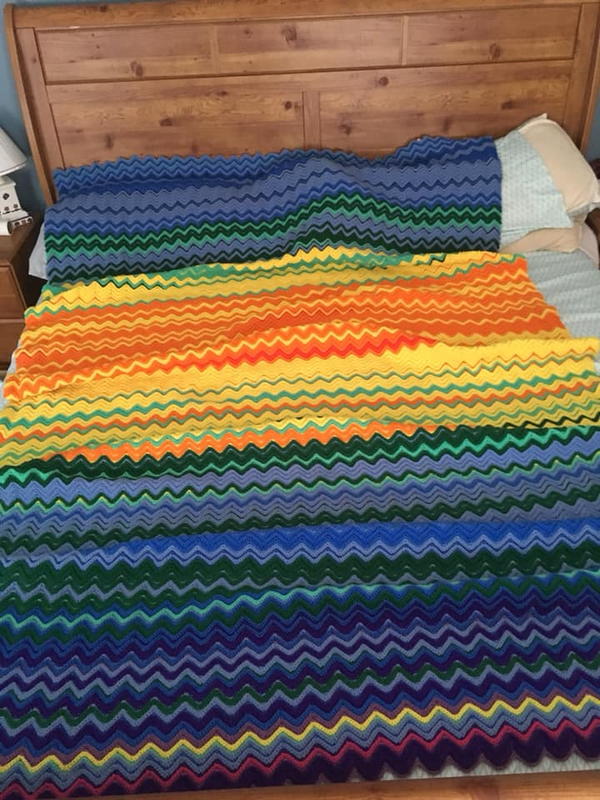
Moss Stitch - If you're making a blanket with averages and fewer colors, this textured crochet stitch can create a warm and cozy blanket.
HDC or Half-Double Crochet - The Half Double Crochet Stitch is a lovely way to create a blanket pattern and easy too!
Single Crochet - This is the go-to stitch for beginner projects, making it ideal for this project as it works up quickly and is a shorter stitch.
Apache Tears Stitch - Looking for a pattern with some real texture? More complicated stitches can really make your colors pop. Just make sure to plan for the thicker stitches when choosing the number of stitches per day or temperature.
Jean Williams Hanson from our AllFreeCrochet community says: I crocheted mine in an Apaches Tears stitch, color changes every 10 degrees. I would use a much smaller hook and a lot fewer stitches across! This covered a queen bed from the top all the way down to the floor on the other end and hung over each side about 5 inches. It's quite lovely, but really not very useful because it's so big and heavy!
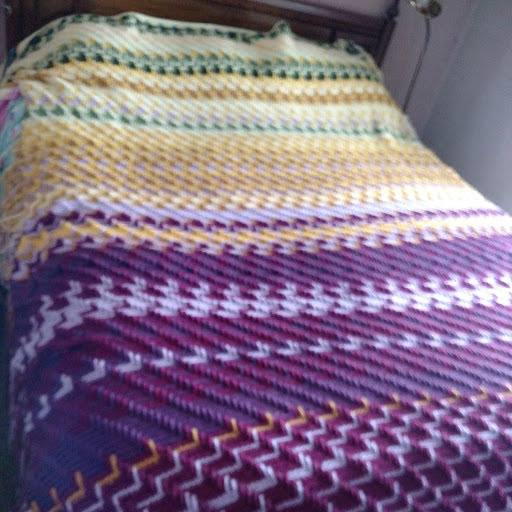
Shell Stitch - A shell stitch pattern is a little bit ambitious for this project but it looks absolutely lovely in the end.
Kathryn Vaughn Hood from our AllFreeCrochet community says: I was ambitious and chose a shell stitch in 2017. I have all temps recorded and work on it occasionally. It is also made with crochet thread.
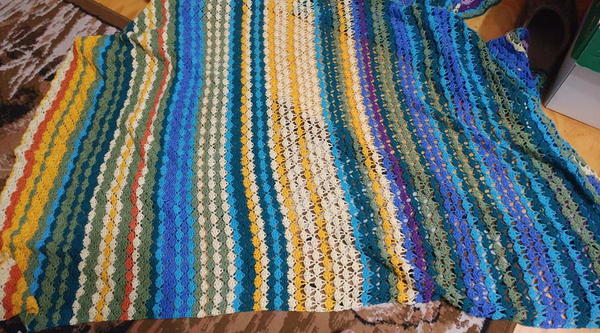
Corner-to-Corner Stitch - If you prefer the look of diagonal lines, this is a fantastic stitch to use. You just want to be careful with how big you want your blanket to be.
Susan C. Zettler from our AllFreeCrochet community: Be wary of what stitch type you use. I made a corner to corner stitch temperature blanket, and the blanket was the size of a queen-size bed by July 26th!
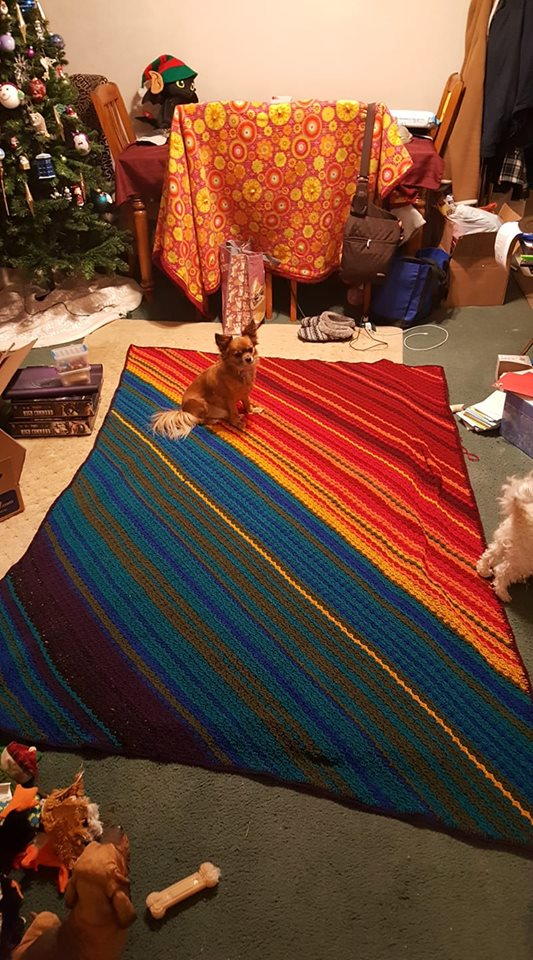
Tips for Completing a Crochet Temperature Blanket
- Make sure to pick a stitch that is appropriate for your plan so that you do not end up with a crazy long blanket.
- Pick a meaningful year (it doesn't have to be this one).
Instead of following along with the temperatures, consider creating a blanket from a meaningful year. You can find all of the temperatures for a certain time and place on the Farmer's Almanac site. Some ideas: a birth year, the year you graduate, the year you got married, or baby's first year! You could even try and make a temperature blanket for someone's whole life or the first 25 to 50 years of their life.
- Make yourself a color chart with your yarn.
A year-long project means it will be very easy to lose track of your color choices and even the names of your yarn. Consider making yourself a color chart to help out. Check out the chart clever readers created below.
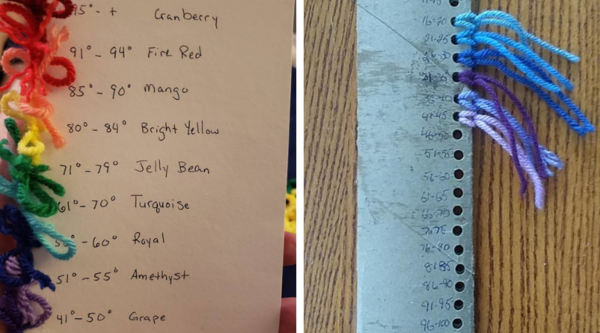
- You don't have to make a rainbow blanket.
While the bright and bold colors that range from deep blues to bright yellows are stunning, you can also make a blanket using lighter, more subtle shades.
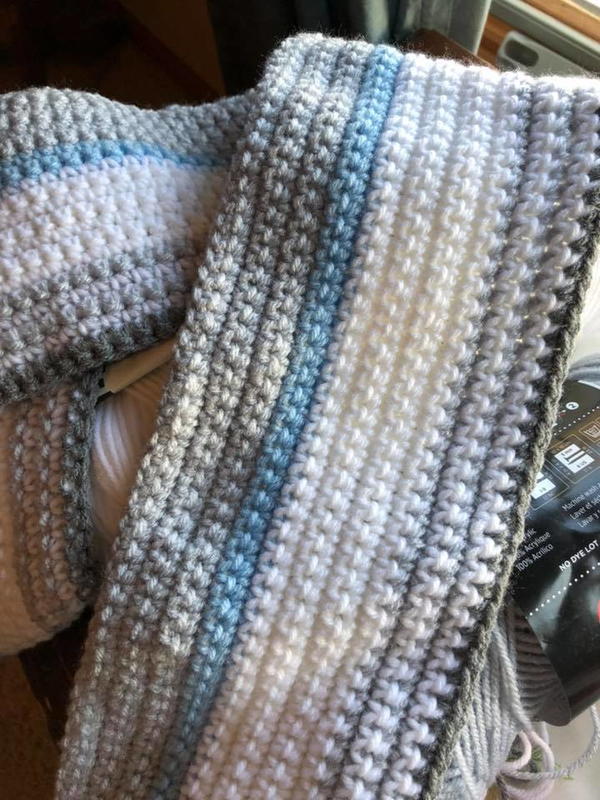
Not Everyone Loves Temperature Blankets
As it turns out, the trendiness of crochet temperature blankets has caused a bit of a stir in the crochet community. Since these blankets take SO much time and effort, many crocheters have completed these blankets only to regret it. Oftentimes, these blankets end up being way too much work and way too big for everyday use. Plus, the effort of changing colors so often can be very difficult. Check out this video from Toni from TL Yarn Crafts to learn more:
Free Temperature Blanket Patterns and Tutorials
Since crochet temperature blankets are such a personal thing, most people choose to wing it when choosing a pattern by settling on some colors and a stitch before getting started. If you'd prefer to follow a pattern, check out these options below.
Note: Click on any image or button to get the specific patterns.

What period of time would you like your temperature blanket to represent?
Read NextWorld's Easiest Afghan



